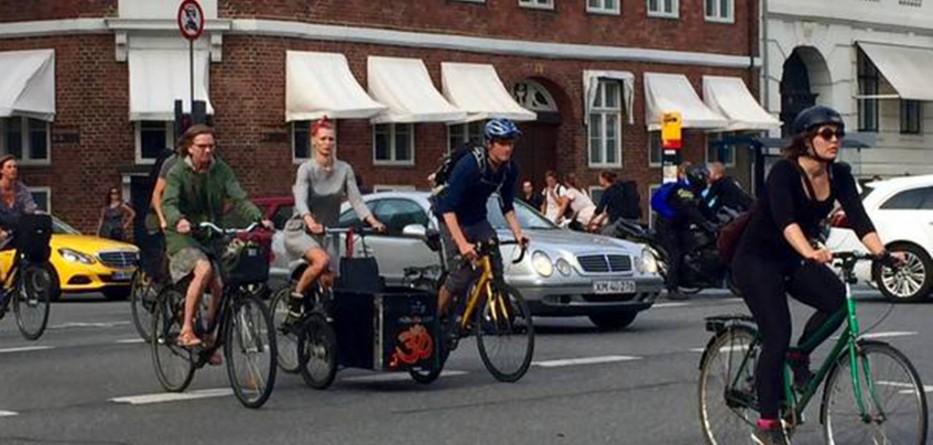Cities have been experiencing an increase in injuries and deaths on the roads recently; some blame phones , but the fact is, there are simply too manyCARS
, but the fact is, there are simply too manyCARS in many of our cities, particularly the successful growing ones. Urban Hub, a website looking at urban issues (and is produced by the ThyssenKrupp elevator company, which makes moving sidewalks) has some suggestions for reducing the number of cars
in many of our cities, particularly the successful growing ones. Urban Hub, a website looking at urban issues (and is produced by the ThyssenKrupp elevator company, which makes moving sidewalks) has some suggestions for reducing the number of cars , and going multi-modal, something we have been discussing for years.
, and going multi-modal, something we have been discussing for years.
For well over half a century, city planners have focused on crafting car-friendly cities – to the detriment of people. But before cars, our city streets served as social gathering spaces, where neighbors could congregate, street vendors could sell their wares, and children could play. The main thrust of the pedestrianization movement is that we need to re-think urban planning, and start designing cities for people, not cars. Proponents of pedestrianization say that fewer cars would mean less stress and more effective use of people’s time, not to mention cleaner air and more attractive cities. In the end, this would actually benefit businesses.

Their step 1 is to reduce the number ofCARS . Of course, every one of these suggestions are fought tooth and nail by the the drivers and the businesses on the streets where these things happen. However they do eventually gain public approval as the options and alternatives are improved, as the city becomes truly multi-modal like Copenhagen or Vancouver.
. Of course, every one of these suggestions are fought tooth and nail by the the drivers and the businesses on the streets where these things happen. However they do eventually gain public approval as the options and alternatives are improved, as the city becomes truly multi-modal like Copenhagen or Vancouver.
Urban Hub does point to a few of these alternatives , including Helsinki’s mobility on demand system that is trying to make private cars obsolete by merging transit, bike sharing, car sharing and taxis into one integrated system. “The hope is toFURNISH
obsolete by merging transit, bike sharing, car sharing and taxis into one integrated system. “The hope is toFURNISH riders with an array of options so cheap, flexible and well-coordinated that it becomes competitive with private car ownership not merely on cost, but on convenience and ease of use.” It also points to an experiment in Tallinn, where public transit is free to residents.
riders with an array of options so cheap, flexible and well-coordinated that it becomes competitive with private car ownership not merely on cost, but on convenience and ease of use.” It also points to an experiment in Tallinn, where public transit is free to residents.

Step 2 is to introduceCAR -free days, a concept that is becoming more common in cities.
-free days, a concept that is becoming more common in cities.

Then step 3 is to establish totally car free zones. They conclude: “All together, these solutions make up the multi-modal transportation we need to really cover everyone’s needs. We don’t need to get rid of: we need to make other options more attractive.“
Urban Hub may have a vested interest (ThyssenKrupp makes a moving sidewalk that is a very attractive alternative mode) but they are right: we need a mix of great transit, walkable cities, bike lanes and hey, a few moving sidewalks would be nice too. More at Urban Hub.
Source: treehugger.com









